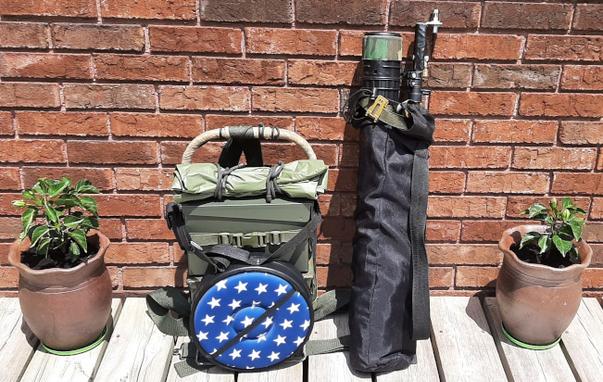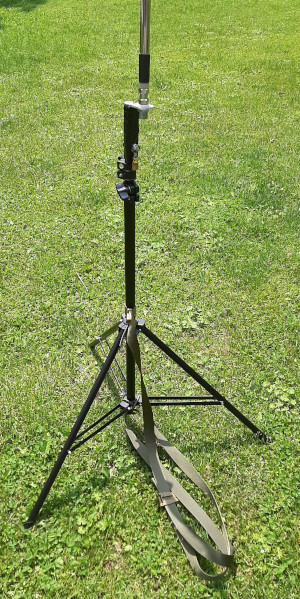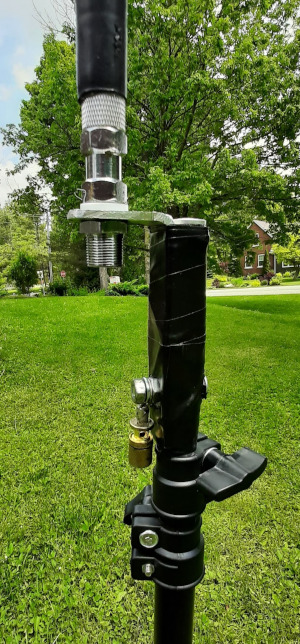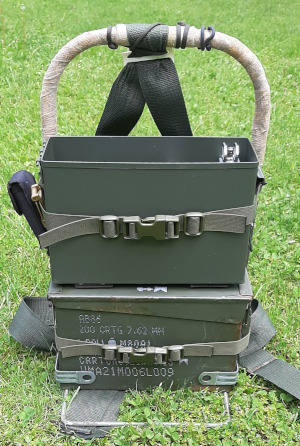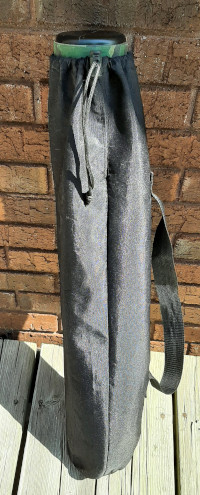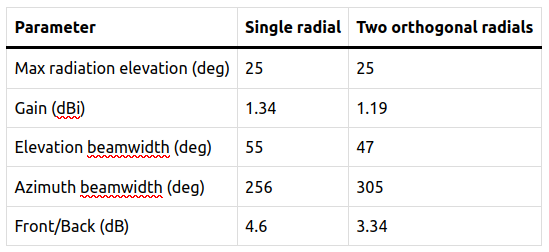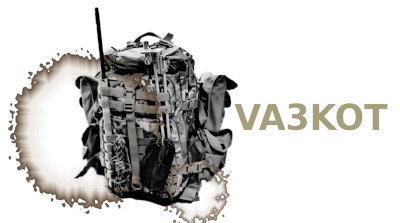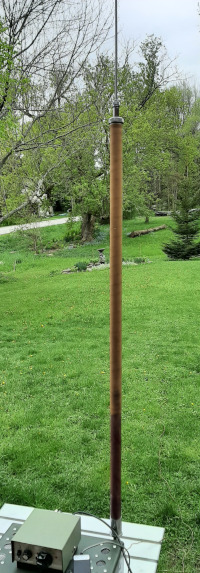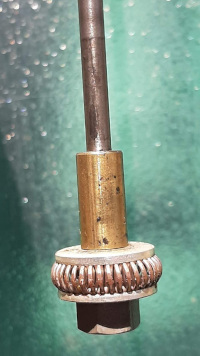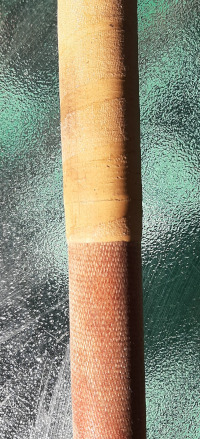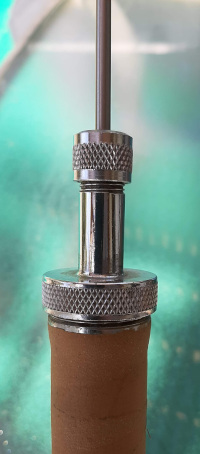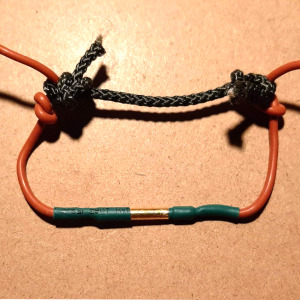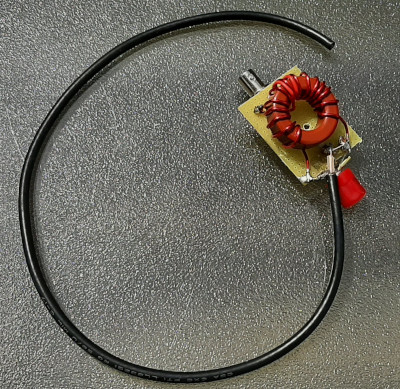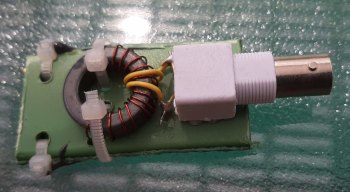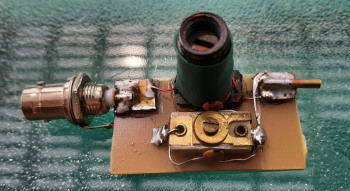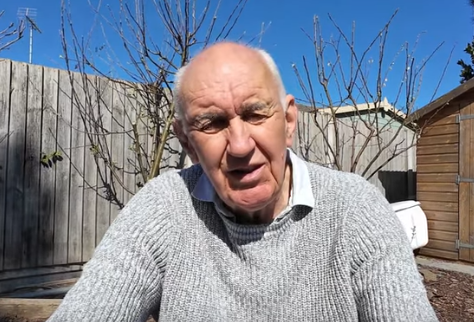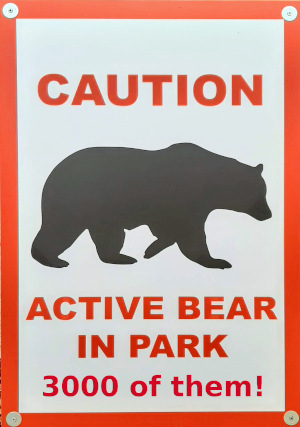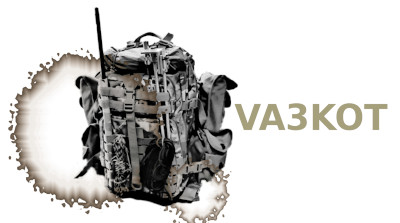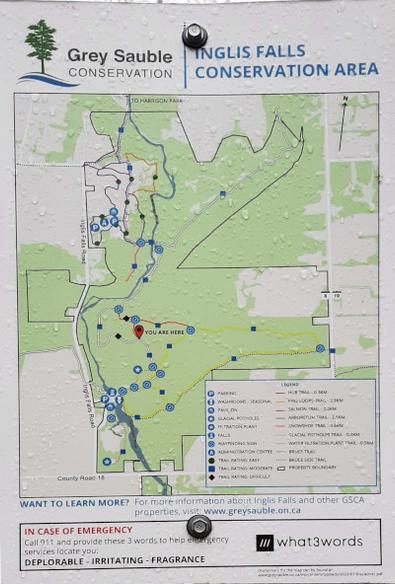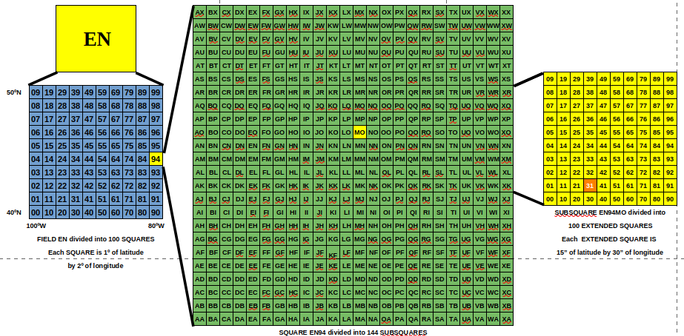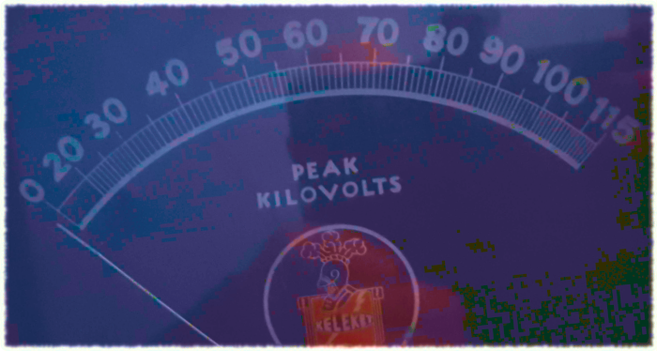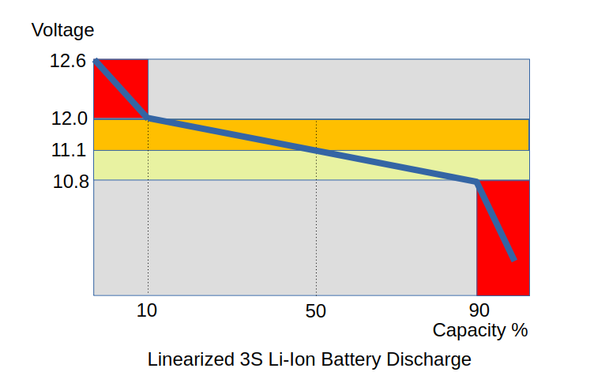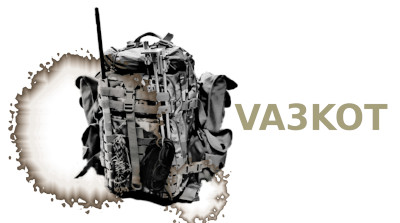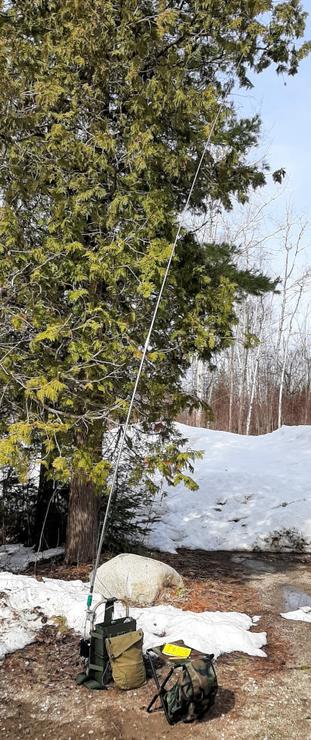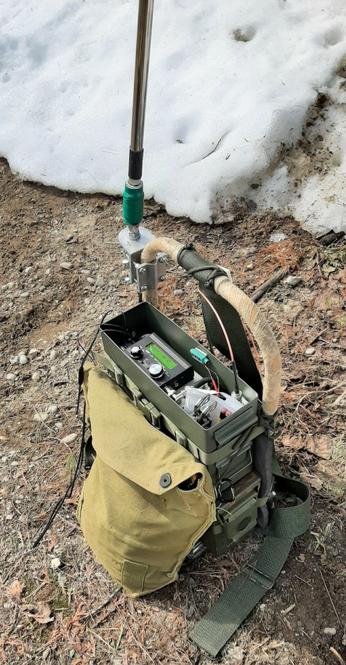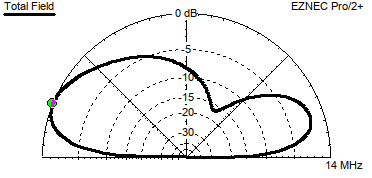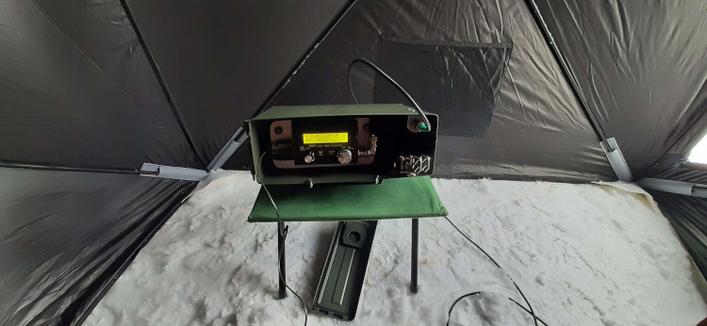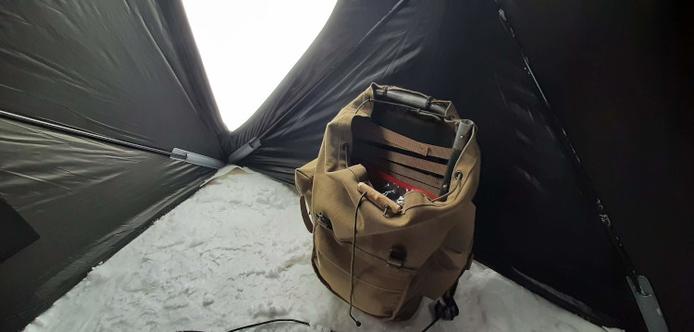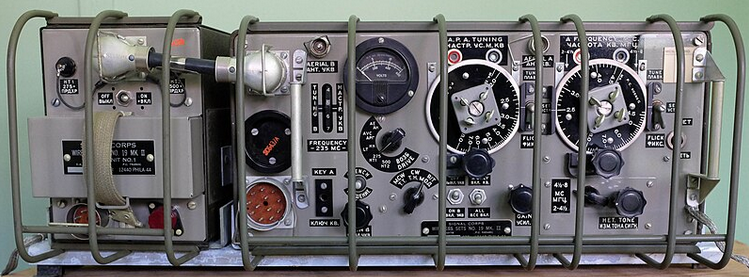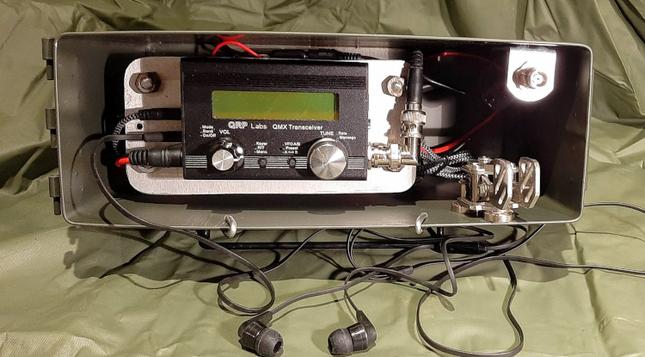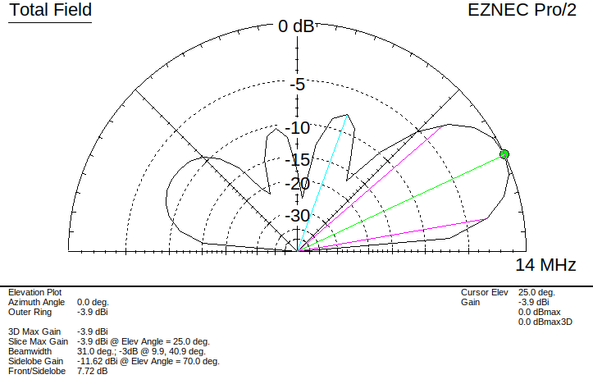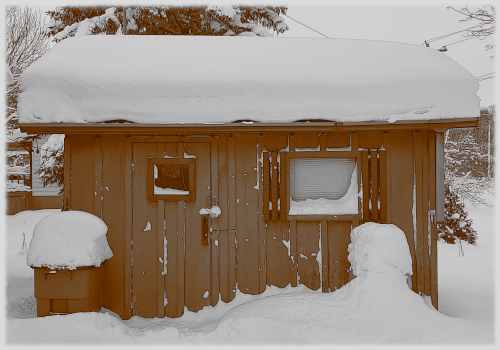My radio is tiny. So why is my POTA backpack so heavy?
We have mountains in Ontario. We call them mountains, but they are really just small hills. So I have never had to actually hike for miles up steep slopes carrying a backpack with all my radio gear, plus anything else I might need for a mountaintop activation. To all those who operate in this fashion, you have my sincere admiration.
VA3KOT’s POTA kit packed and ready to go.Get your kicks on fourteen zero six
At the other end of the scale we have what has been called PLOTA (Parking Lots On The Air) activators. These operators perform their activations while sitting in their vehicles. It is tempting to think they probably grab their morning coffee at the a drive-thru en route to the activation. I confess that I have done this too, but only when the temperature drops down to double digits with a minus sign in front. I imagine that, in southern states, when it gets hot enough to cook eggs on the sidewalk, operating in air-conditioned comfort is almost a necessity. If this style of operating works for you, or is necessary in your environment, then you are doing your part to keep outdoor radio operations alive and thriving.
Mr Blue Sky
In between hiking up an inhospitable mountain, exposed to the elements, and being welded to a car seat is another option. Maybe this is the true expression of operating outdoors – leaving your vehicle and carrying your station into the back country, or even a local park. This is my personal choice. It combines a love of the great outdoors with a love of radio – what I have dubbed operating in the Big Blue Sky Shack.
There are options even within that. Do you carry your gear from your vehicle to the nearest picnic table, or do you backpack everything you need (seat and table included) down a trail, blatting the bugs that are intent on drinking your blood, admiring the wildlife while avoiding large mammals intent on eating you, to find a clearing in the trees where you can set up.
Oh Yuck!
Let me tell you a story about picnic tables that may discourage you from regarding them as a comfortable, convenient place to operate. I used to be an RV camper; it was fun but for several reasons I eventually sold my trailer. During one camping trip a neighboring camper was packing up his giant fifth wheel. I watched as he laid his sewage hose out to dry on a picnic table. For those who have never owned an RV (or caravan as it is known in many parts of the world), a sewage hose is used for emptying the contents of the “black tank” at the “dump station” on the way out of the campground. But I am sure you always use a plastic table cloth, don’t you? Well consider this, your table cloth is going to pick up millions of bacteria from the picnic table surface and transfer them to your food. Yuck!
Little boxes
Going back to the supremely fit, energetic types who climb real mountains to operate. They tend to carry extremely lightweight radios; often the whole station packs away into a tough, rugged plastic case that slips into the pocket of a backpack. I have often thought of emulating this idea. But instead, not being quite as fit as I could be, and with age-related physical limitations, I have chosen a different approach. My backpack station is a little on the heavy side (not to be confused with the Heaviside which is a layer of the ionosphere that makes our hobby possible).
Say, friend, I got a heavy load
At the heart of it all is a QRP-Labs QMX transceiver. This tiny device is so light it almost defies gravity – but it is not a complete portable radio station. So I built a backpack frame that can carry everything I need – and it is surprising what that includes when you can’t pop back to your vehicle to grab something else. Here is a list of what I carry:
- Transceiver – QRP-Labs QMX (low band version)
- Talentcell 6500 mAh LiFePo4 battery
- Drok buck converter to regulate the voltage fed to the transceiver
- Putikeeg CW paddle key
- Earbuds
- Ham made line isolator (common mode current choke)
- Selection of RG-316 coax cables
- Rite in the Rain log book, pencils
- UTC wristwatch
- Reading glasses
- Selection of wire antennas and radials
- 18.5ft telescoping stainless steel whip
- Lightweight tripod for supporting the whip on rocky ground
- Spiderbeam 7m telescoping fiberglass pole
- Telescoping plastic seat
- Multitool
- Small tarp
- Selection of cordage
Of course there are even more things that must be carried such as water, bug spray, snacks etc. Those little hardened plastic boxes with a tiny radio, key and wire antenna are impressive to behold, but they are not a complete and independent station incorporating everything needed for personal comfort and survival far from shelter and the means of egress.
Experience has taught me not to rely on commercial backpacks to carry all my gear. Most are intended to carry the typical range of items needed by a hiker. I bought a rugged, military style, cotton canvas backpack from a local supplier and was disappointed when I tried to use it to carry my radio equipment. There was no padding, no frame; it was very uncomfortable to carry. Clearly it was made for lighter, softer loads than mine.
Another alternative is real backpacks made for the military. They are built tough but are also very tough on the budget. I just couldn’t justify spending many times more on a backpack than the radio equipment inside it.
Custom antenna bracket secured with a quarter inch nut and bolt – and Gorilla tape! Note the radial attachment point.Just in case
The solution involved a little bit of work in my garage workshop using many items I had already hoarded ready for future project ideas. I had to purchase two 30-cal steel ammo cases, but they were very inexpensive. One was sold for storing hunting ammunition, but the other was a bona-fide military surplus case with markings indicating it was intended for storing 200 cartridges of 7.62mm rounds and other items. I plan to repaint it sometime before it gets me into trouble. Why steel ammo cases? They are built tough for protecting delicate equipment, they are cheap, and they provide sufficient heft to create a firm operating platform.
Vertically stacked cases are the right height for field operations while the operator is seated on a camping stool.Both steel cases are stacked vertically on a modified aluminum backpack frame. The bottom case holds antennas, cables etc. The top case holds radio, battery, key etc. Everything is pre-assembled inside the radio case – just pop the lid, insert the earbuds, turn on, tune in and go.
Telescoping plastic stool from AmazonMy Putikeeg CW key has very strong magnets on its base and holds very securely to the steel case. I use it in vertical fashion, with the paddles peeking up above the rim of the steel case. The assembly sits at a very comfortable height for operating the radio without the need for a table. My seat is a lightweight, plastic, telescoping thing with a padded cushion on top. It is an ingenious design with many latches holding it up. I was very cautious about trusting my posterior atop this perch at first, but it supports my weight just fine. The pictures tell a lot more than many more words can convey.
Whatever style of outdoor operating you prefer you are helping keep amateur radio alive. This post describes the way I operate and is not meant to be judgemental about any other style. There is room enough in our hobby for whatever way you like to operate. In fact, I invite you to comment or send me a description of your outdoor radio equipment – even if it is mounted on a set of four wheels 😉
All tuned up on fourteen zero six. The antenna connects to the BNC on the right. The Putikeeg paddles are secured by strong magnets. Earbuds are on the right. Beneath the radio are the 6500 mAh LFP battery, Drok buck voltage regulator and a line isolator.My POTA gear is constantly evolving so what you see and read here may not be what you see if we meet on a trail sometime. I like to experiment and try out different ideas. Some call me nuts; maybe they are right but I’m having fun.
Help support HamRadioOutsidetheBox
No “tip-jar”, “buy me a coffee”, Patreon, or Amazon links here. I enjoy my hobby and I enjoy writing about it. If you would like to support this blog please follow/subscribe using the link at the bottom of my home page, or like, comment (links at the bottom of each post), repost or share links to my posts on social media. If you would like to email me directly you will find my email address on my QRZ.com page. Thank you!
The following copyright notice applies to all content on this blog.
This work is licensed under a Creative Commons Attribution-NonCommercial-NoDerivatives 4.0 International License.
